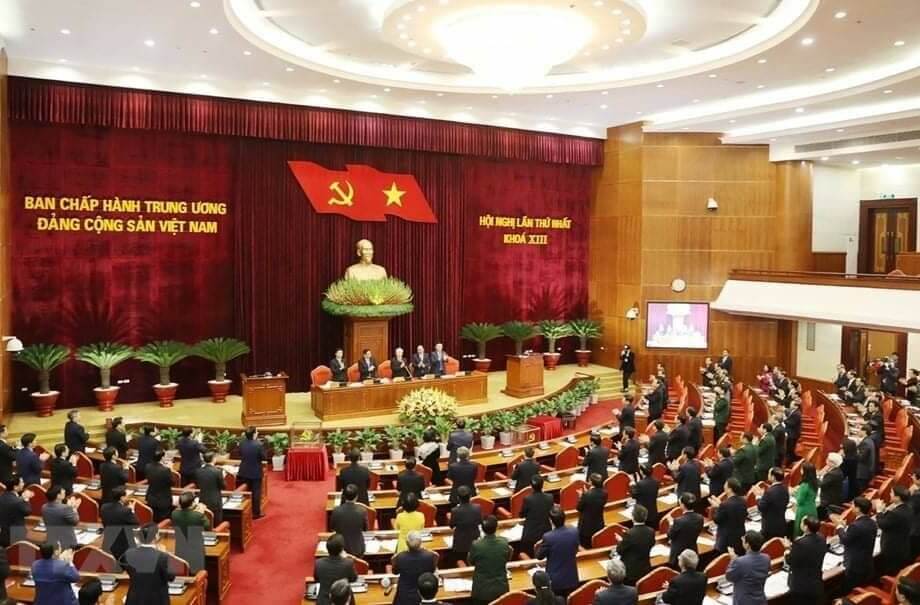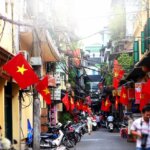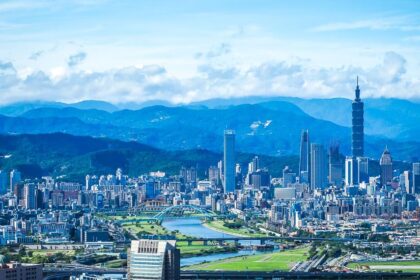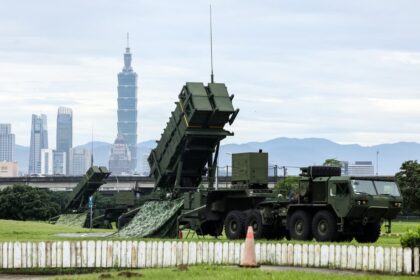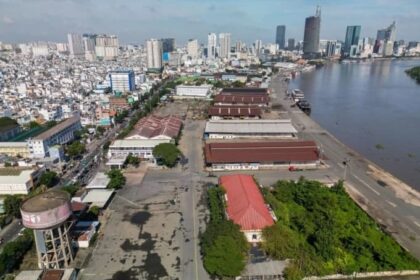Vietnam Launches Sweeping Economic Reforms to Become Asia’s Next Tiger Economy by 2045
Ambitious national strategy targets high-tech industries, private sector growth, and infrastructure to achieve high-income status within two decades.
In late 2024, under the red banners and gold bust of revolutionary leader Ho Chi Minh in Hanoi, Communist Party chief To Lam declared the start of a “new era of development.” This announcement marked the launch of Vietnam’s most ambitious economic overhaul in decades, with the explicit goal of transforming the country into Asia’s next “tiger economy” and reaching high-income status by 2045—the centenary of its independence.
- Vietnam Launches Sweeping Economic Reforms to Become Asia’s Next Tiger Economy by 2045
- Why Vietnam Wants to Become a Tiger Economy
- Vietnam’s 2045 Strategy: Multiple Engines for Growth
- Challenges on the Road to 2045
- How Vietnam Plans to Overcome Its Challenges
- Technology and Innovation: The Next Growth Engine
- Climate Adaptation and Sustainable Growth
- Institutional Reform: Streamlining for Efficiency
- What’s at Stake: Can Vietnam Succeed?
- Key Points
Vietnam’s leaders are betting on a bold mix of industrial upgrading, infrastructure investment, and institutional reform to escape the so-called “middle-income trap” and join the ranks of advanced Asian economies like South Korea and Taiwan. The plan comes as Vietnam’s traditional export-led growth model slows, and as the country faces mounting challenges from global trade tensions, an aging population, and climate risks.
Why Vietnam Wants to Become a Tiger Economy
The term “tiger economy” refers to the rapid, sustained growth seen in East Asian economies such as South Korea, Taiwan, Singapore, and Hong Kong during the late 20th century. These countries achieved high-income status through a combination of export-led industrialization, investment in education and infrastructure, and strategic government intervention in the economy.
Vietnam’s economic transformation since the Đổi Mới (Renovation) reforms of 1986 has been remarkable. The country shifted from a centrally planned system to a “socialist-oriented market economy,” opening up to foreign investment and global trade. Average annual income has soared from around $1,200 in 1990 to over $16,000 today (adjusted for local prices), and millions have been lifted out of poverty. Vietnam is now a global manufacturing hub, with industrial parks replacing quiet suburbs and multinational brands relying on Vietnamese factories for everything from electronics to apparel.
However, the export-led, low-cost manufacturing model that powered this growth is losing steam. Rising wages, global supply chain shifts, and new trade barriers—such as the recent U.S. tariffs on Vietnamese goods—have exposed the vulnerabilities of relying too heavily on cheap labor and foreign demand. To avoid stagnation and reach high-income status, Vietnam’s leaders argue that the country must diversify its economy, move up the value chain, and foster innovation.
Vietnam’s 2045 Strategy: Multiple Engines for Growth
Unlike earlier Asian tigers that focused on a single sector—electronics in South Korea, semiconductors in Taiwan, finance in Singapore—Vietnam’s economy is now too complex and interconnected to rely on just one “winning” industry. Instead, the government’s 2045 strategy is built on three pillars:
- Industrial Upgrading: Vietnam is prioritizing high-tech sectors such as semiconductors, artificial intelligence (AI), and renewable energy. Strategic tax breaks, research support, and incentives are being rolled out in major cities like Hanoi, Ho Chi Minh City, and Danang to attract both domestic and foreign investment.
- Infrastructure Investment: The government has announced plans to invest the equivalent of 10% of GDP—around $67 billion—in mega-projects, including a North–South high-speed railway that will cut travel time between Hanoi and Ho Chi Minh City to under eight hours. Nuclear power plants and new logistics corridors are also in the works to support industrial growth and energy needs.
- Financial Modernization and Private Sector Empowerment: Vietnam aims to establish global financial centers in Ho Chi Minh City and Danang, offering streamlined regulations, tax breaks, and support for fintech startups. In a major policy shift, private businesses are now designated as the “most important force” in the economy, with easier access to loans, priority in government contracts, and opportunities to participate in large-scale projects.
Resolution 68, passed by the Communist Party in May, formalizes this new direction. Ministries are being merged, bureaucratic layers reduced, and the number of provinces consolidated from 63 to 34 to create stronger regional talent pools and more efficient administration.
Learning from the Past: Avoiding the Middle-Income Trap
The “middle-income trap” describes the phenomenon where countries experience rapid growth but then stall before reaching high-income status. According to Professor Lin Yifu, a leading Chinese economist, only a handful of developing countries have successfully made this leap since World War II. Most get stuck due to a lack of innovation, overreliance on cheap labor, or failure to reform institutions.
Professor Lin argues that Vietnam’s best chance lies in a pragmatic approach that blends state coordination with market freedom. He points to the “developmental state” model used by Japan, South Korea, and Taiwan, where governments provided targeted support to strategic industries while allowing market forces to drive competition. Lin cautions against both excessive state intervention and rapid, unregulated liberalization, which have led to stagnation or crisis in other regions.
Vietnam’s current per capita GDP is similar to China’s in 2005. If it can replicate China’s pace of technological and structural transformation, Vietnam could reach high-income status by 2045. The key, Lin says, is to identify and develop unique national strengths, support innovation, and maintain a flexible, goal-driven industrial policy.
Challenges on the Road to 2045
Despite its impressive progress, Vietnam faces significant obstacles in its quest to become a tiger economy. These include:
- Slowing Export Growth and Trade Tensions: Vietnam’s export boom has benefited from U.S.–China trade tensions, making the United States its largest export market. However, this success has drawn scrutiny. In 2024, Vietnam ran a $123.5 billion trade surplus with the U.S., prompting threats of tariffs as high as 46%. Negotiations resulted in a 20% levy on most Vietnamese goods, with double tariffs on suspected transshipments (goods routed through Vietnam to avoid U.S. restrictions on China). While Vietnam managed to secure terms comparable to regional peers, the episode underscored the risks of overdependence on external markets.
- Private Sector Constraints: Although the government is now championing private enterprise, local companies still face barriers accessing loans, markets, and technology. State-owned enterprises (SOEs) continue to dominate key sectors, leading to inefficiency and cronyism. Resistance from vested interests within the Communist Party and SOEs could slow reform efforts.
- Demographic Shifts: Vietnam’s “golden population window”—when the working-age population outnumbers dependents—will close by 2039. The labor force is projected to peak just three years later. This demographic shift threatens to shrink productivity and strain social services, especially since families (and women in particular) are the default caregivers. The government is expanding preventive healthcare, gradually raising the retirement age, and encouraging more women to join the formal workforce to offset labor gaps.
- Climate Risks: Vietnam is one of the countries most vulnerable to climate change. Typhoons, rising sea levels, and flooding threaten industrial parks and agricultural regions like the Mekong Delta. In 2024, Typhoon Yagi caused $1.6 billion in damage and knocked 0.15% off GDP. The World Bank warns that without strong adaptation measures, Vietnam could lose up to 14.5% of GDP annually by 2050, and up to one million people could fall into extreme poverty by 2030. Businesses are responding by investing in flood resilience and sustainable practices, but the scale of the challenge is immense.
How Vietnam Plans to Overcome Its Challenges
Vietnam’s reform blueprint is both ambitious and pragmatic, drawing lessons from global development successes and failures. Key elements include:
- Economic Diversification: Rather than betting on a single sector, Vietnam is making “multiple big bets” across high-tech manufacturing, AI, renewable energy, and advanced services. The government is providing incentives for research and development, supporting startups, and encouraging foreign direct investment in cutting-edge industries.
- Upgrading Infrastructure: The $67 billion North–South high-speed railway is the centerpiece of a broader push to modernize transport, energy, and logistics. Nuclear power plants and renewable energy projects aim to meet surging electricity demand while reducing carbon emissions. These investments are designed to support both industrial growth and climate resilience.
- Empowering the Private Sector: Resolution 68 marks a seismic shift in economic policy, positioning private businesses as the main engine of growth. The government is streamlining regulations, improving access to finance, and opening mega-projects to private bidding. By 2030, Vietnam aims to elevate at least 20 domestic firms to global scale, creating “national champions” that can compete internationally.
- Institutional Reform: Ministries are being merged, bureaucratic layers eliminated, and provinces consolidated to create more efficient, integrated regional economies. The goal is to reduce redundancy, improve governance, and build deeper talent pools.
- Social Protection and Labor Policy: To address demographic challenges, Vietnam is expanding healthcare access, raising the retirement age, and promoting female labor force participation. These measures are intended to maintain productivity and support healthy aging as the population grows older.
Regional Competition and International Partnerships
Vietnam’s rapid rise has not gone unnoticed by its neighbors. Thai experts warn that Vietnam’s evidence-based reforms and infrastructure investments could allow it to overtake Thailand in competitiveness and growth. China and South Korea are increasingly prioritizing Vietnam as a manufacturing and investment destination, with South Korea pledging to double bilateral trade to $50 billion within five years.
Vietnam’s diplomatic agility is also on display. The country has responded flexibly to U.S. tariff threats, diversified its trade partnerships, and actively participates in regional agreements such as the ASEAN–RoK Free Trade Agreement and the Comprehensive and Progressive Agreement for Trans-Pacific Partnership (CPTPP). These moves are designed to reduce overdependence on any single partner and strengthen Vietnam’s role as a regional leader.
According to Thai scholar Kavi Chongkittavorn, Vietnam’s partnership with South Korea is a model for regional collaboration, combining Vietnam’s dynamic manufacturing base and young workforce with South Korea’s capital, expertise, and innovation. This cooperation extends beyond economics to technology, education, and cultural exchange, reinforcing Vietnam’s emerging leadership in Southeast Asia.
Technology and Innovation: The Next Growth Engine
Vietnam’s high-tech ambitions are central to its 2045 strategy. The country is rapidly developing its technology sector, with the startup ecosystem producing four unicorns and attracting $2.5 billion in venture funding by 2025. Major global companies like Samsung and Apple have established significant manufacturing hubs, with Samsung making Vietnam its largest production base worldwide.
Government initiatives such as the Vietnam Innovation Network and Directive No. 05/CT-TTg target 8% GDP growth in 2025 and aim for double-digit growth in subsequent years. The enterprise resource planning market is projected to reach $45 billion by 2025, accelerating digital transformation across industries. Military-tech advancements and high-tech exports by companies like Viettel Group further contribute to growth.
Vietnam’s anticipated upgrade to “emerging market” status is expected to attract even more investors, while its strategic position in global supply chains—especially amid U.S.–China trade tensions—enhances its appeal as a manufacturing and innovation hub.
Climate Adaptation and Sustainable Growth
Climate change is not just an environmental issue for Vietnam—it is a direct economic threat. The country’s long coastline, low-lying delta regions, and reliance on agriculture and manufacturing make it highly vulnerable to typhoons, flooding, and sea level rise.
Industrial parks are now adopting flood resilience measures, and businesses are investing in climate adaptation as a form of market regulation. For example, DEEP C Industrial Zones in northern Vietnam redesigned their flood plans after losing a major investor to climate risks. When Typhoon Yagi struck, their parks remained dry while others suffered heavy losses.
The government is also investing in renewable energy and low-carbon infrastructure to meet growing electricity demand and attract high-tech industries. Reliable, sustainable power is seen as essential for maintaining Vietnam’s competitiveness in global markets.
Institutional Reform: Streamlining for Efficiency
Vietnam’s reform agenda includes a sweeping reorganization of government structures. By merging ministries, eliminating lower-tier bureaucracies, and consolidating provinces, the government aims to reduce redundancy, improve efficiency, and create stronger regional economic centers. This streamlining is intended to support both economic growth and better public services.
Institutional reform also extends to the business environment. The government is simplifying regulations, improving transparency, and providing targeted support for innovation and international expansion. These changes are designed to help local companies move up the value chain and compete globally.
What’s at Stake: Can Vietnam Succeed?
Vietnam’s transformation strategy is a high-stakes gamble. The country is attempting to combine rapid capitalist growth with one-party political control, a model that has few precedents. While the fundamentals are strong—a large and increasingly skilled workforce, a strategic location, and a rising consumer base—success is not guaranteed.
Execution risks abound. Resistance from state-owned enterprise stakeholders, political conservatives, and those benefiting from the status quo could slow reforms. External shocks, such as global trade disruptions or climate disasters, could derail progress. Demographic shifts and social challenges will require careful management and sustained investment in health, education, and social protection.
Yet optimism remains high. Vietnam’s middle class is projected to swell to 75 million by 2030, and foreign investment continues to flow in. If the country can maintain reform momentum, foster innovation, and manage its demographic and environmental risks, it could emerge as Southeast Asia’s next economic powerhouse.
Key Points
- Vietnam has launched its most ambitious economic reforms in decades, aiming to become Asia’s next “tiger economy” and achieve high-income status by 2045.
- The government’s strategy focuses on high-tech industries, infrastructure investment, and empowering the private sector, with Resolution 68 designating private businesses as the main growth engine.
- Major challenges include slowing export growth, trade tensions with the U.S., climate risks, an aging population, and resistance from state-owned enterprise stakeholders.
- Vietnam is investing in mega-projects like a $67 billion high-speed railway, nuclear power, and renewable energy to support industrial growth and climate resilience.
- Institutional reforms are streamlining government structures, reducing bureaucracy, and consolidating provinces to improve efficiency and build stronger regional economies.
- Vietnam’s demographic advantage will end by 2039, prompting efforts to expand healthcare, raise the retirement age, and increase female workforce participation.
- The country’s rapid rise is influencing regional competition, with neighbors like Thailand urged to accelerate their own reforms to keep pace.
- Success will depend on Vietnam’s ability to balance reform speed with political consensus, secure foreign investment, and turn structural challenges into competitive advantages.


